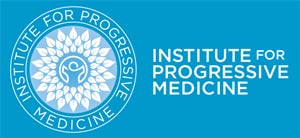(Excerpt from Orthomolecular Validus Newsletter, August 2008)
Recently, the American Academy of Pediatrics (AAP) published their latest guidelines for lipid screening and cardiovascular health in childhood. The news media focused primarily on the pharmaceutical recommendations which are recommended in certain populations starting at age 8; and screening for dyslipidemia in some patients starting at age 2. Dyslipidemia is a disruption in the amount of lipids, including cholesterol and triglycerides in the blood. In western societies, most dyslipidemias are hyperlipidemias; that is, an elevation of lipids in the blood, often due to diet and lifestyle. While there is more to the recommendation than these two bullet points, these updated recommendations are still fraught with simplistic and outdated ideas.
Dyslipidemias in children and adolescents is a health concern. The combination of obesity, sedentary living, poor diet and environmental factors is driving a phenomenon of metabolic disorders decades earlier in current populations than was typical 50 years ago. Unfortunately, these recommendations incorporate very little of the information gathered over the past decades on managing these disorders. First and foremost, the screening and target goals are based solely on LDL-cholesterol levels (they mention metabolic syndrome but since the cut-off points are for adults- no specific recommendations are given).More…
While lifestyle recommendations are given in the AAP document, they are very general and include the usual restrictions in saturated fats and cholesterol. Passing mention is made of fiber and plant sterols but no mention of glycemic impact (GI or GL) of foods, insulin-sensitizing diets or the role of juice and sweetened beverages in their connection with metabolic disorders.
We are in the midst of a huge metabolic crisis. Regrettably, a large portion of the medical establishment believes the only true savior is pharmaceutical intervention. A comment made during the recent conference on Integrated Biomarkers in Cardiovascular Disease (Seattle, WA July 9-11) is typical of this view. When asked during a case presentation whether omega-3 fatty acids would be helpful to reduce triglycerides in the patient being discussed, the presenter responded why would I use fish oil when I can achieve the same results using pharmacotherapy. This individual, and many more with the same medical view, are still at the helm of many editorial boards, medical schools, and guidance committees influencing thousands of physicians and patients (see article below). Hopefully this trend can slowly be reversed before they recommend statin drug fortification in the municipal drinking water.
Related Links and Articles:
* Dietary intake and the metabolic syndrome in overweight latino children. J Am Diet Assoc. 2008 Aug;108(8):1355-9.
* Sugar-Sweetened Beverages and Incidence of Type 2 Diabetes Mellitus in African American Women. Arch Intern Med. 2008;168(14):1487-1492.
* Plasma Vitamin C Level, Fruit and Vegetable Consumption, and the Risk of New-Onset Type 2 Diabetes Mellitus Arch Intern Med. 2008;168(14):1493-1499.
* Childhood levels of serum apolipoproteins B and A-I predict carotid intima-media thickness and brachial endothelial function in adulthood: the cardiovascular risk in young Finns study.
J Am Coll Cardiol. 2008 Jul 22;52(4):293-9.
* Fasting plasma insulin modulates lipid levels and particle sizes in 2- to 3-year-old children. Obes Res. 2003 Jun;11(6):709-21.
* The relative impact of a vegetable-rich diet on key markers of health in a cohort of Australian adolescents. Asia Pac J Clin Nutr. 2008;17(1):107-15.
* Effect of a short-term diet and exercise intervention in youth on atherosclerotic risk factors. Atherosclerosis. 2007 Mar;191(1):98-106.
